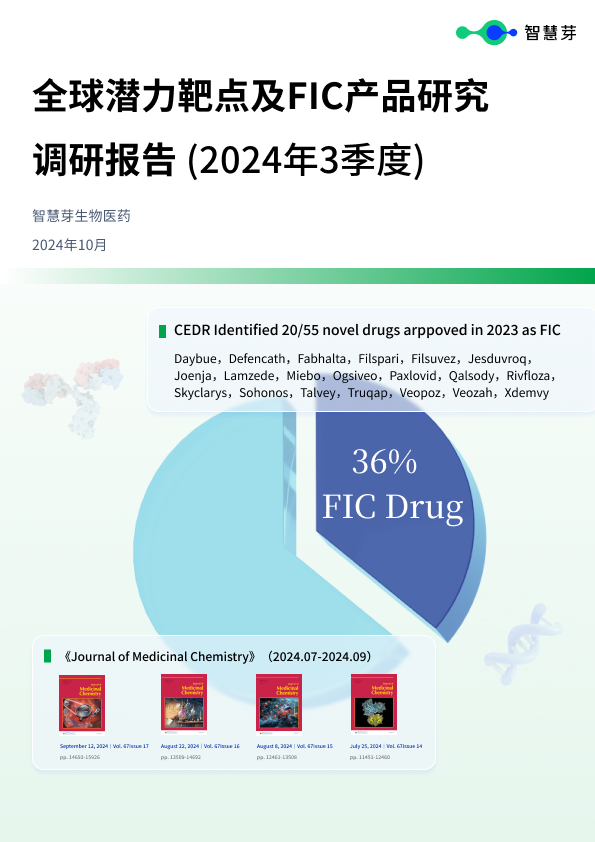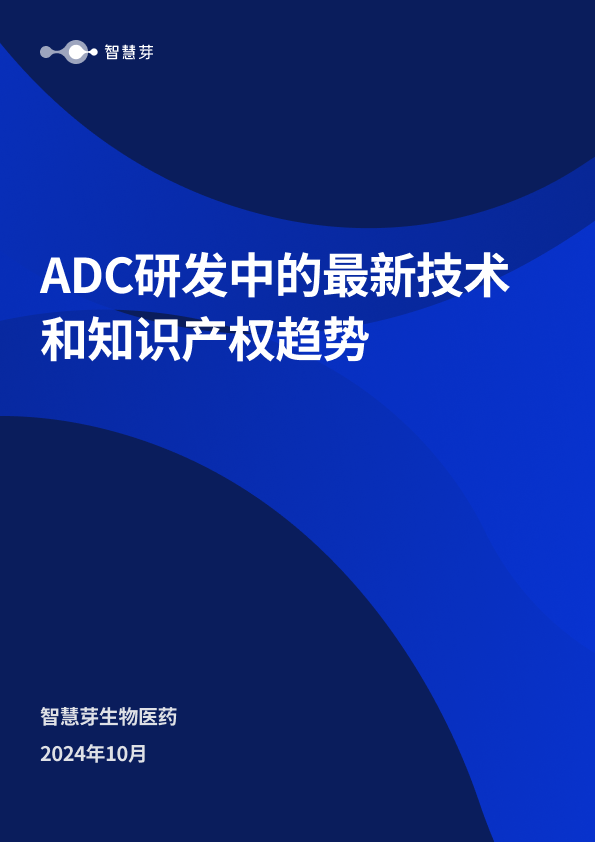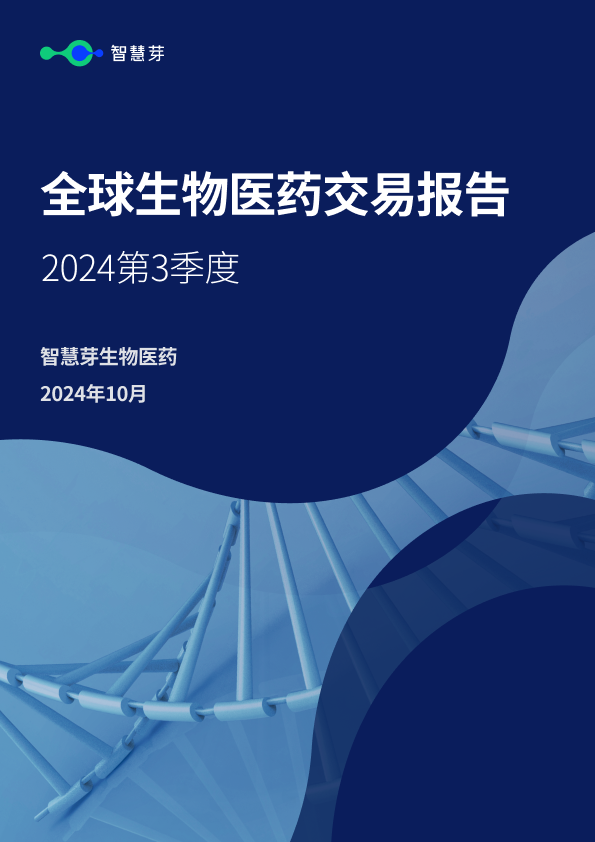Eisai Presents Latest Analysis of Lecanemab's Effect on Biomarker Changes and Subcutaneous Dosing at The Alzheimer's Association International Conference (AAIC) 2023
临床结果上市批准临床3期
Further Phase 3 analysis shows benefits of lecanemab on both amyloid-beta and tau, two underlying pathological hallmarks of Alzheimer's disease
New data on subcutaneous formulation shows promising PK /PD data modeling on efficacy and safety, representing a potential new option for administering therapy
TOKYO and CAMBRIDGE, Mass., July 19, 2023 /PRNewswire/ -- Eisai Co., Ltd. (Headquarters: Tokyo, CEO: Haruo Naito, "Eisai") and Biogen Inc. (Nasdaq: BIIB, Corporate headquarters: Cambridge, Massachusetts, CEO: Christopher A. Viehbacher, "Biogen") announced today that the results of a detailed analysis of the Phase 3 Clarity AD study demonstrated that lecanemab-irmb (generic name, U.S. brand name: LEQEMBI®) treatment showed reductions in amyloid-beta (Aβ) pathology and downstream biomarker changes. This analysis, and the latest findings on the lecanemab subcutaneous (SC) formulation currently under development, were presented at the Alzheimer's Association International Conference (AAIC) 2023. The U.S. Food and Drug Administration (FDA) granted traditional approval for LEQEMBI for the treatment of Alzheimer's disease (AD) on July 6, 2023.
Clarity AD was a global confirmatory Phase 3 placebo-controlled, double-blind, parallel-group, randomized study in 1,795 people with early AD (lecanemab group: 10 mg/kg bi-weekly IV treatment: 898, placebo group: 897). Lecanemab met the primary endpoint (change from baseline at 18 months on the global cognitive and functional scale, Clinical Dementia Rating-Sum of Boxes [CDR-SB]) and all key secondary endpoints with statistically significant results. In November 2022, results of the Clarity AD study were presented at the Clinical Trials on Alzheimer's Disease (CTAD) conference and simultaneously published in the peer-reviewed medical journal, The New England Journal of Medicine.
Lecanemab: Amyloid Reduction and Evidence of Downstream Biomarker Modification
In addition to the key secondary endpoint of lecanemab's effect on amyloid accumulation in the brain as measured by amyloid positron emission tomography (PET), the Clarity AD study also measured multiple A/T/N+ (amyloid, tau, neurodegeneration) biomarkers involved in the pathophysiology of AD, such as amyloid (Aβ1-42 in CSF, Aβ42/40 ratio in plasma), tau (p-Tau181 in cerebral spinal fluid [CSF] and plasma), neurodegeneration (total tau [t-tau] in CSF and neurofilament light [NfL] in CSF and plasma), astrocyte activation (plasma GFAP: glial fibrillary acidic protein) and synaptic dysfunction (neurogranin in CSF).
In an exposure/bioavailability and modeling study comparing intravenous (IV) and subcutaneous (SC) dosing of lecanemab, the bioavailability of SC dosing of lecanemab was shown to be approximately 50% of that of IV dosing. Further analysis using the PK/PD model showed that a fixed lecanemab SC dose of 720 mg administered weekly may potentially result in comparable exposure (area under the curve [AUC]) and efficacy as measured by reduction in amyloid PET SUVr to 10 mg/kg IV dose administered bi-weekly. Models developed with data following IV administration show that amyloid-related imaging abnormalities with edema/effusion (ARIA-E) are related to concentrations of lecanemab in the blood, with maximum blood concentrations being the best predictor of ARIA-E. Because SC dosing will have lower maximum blood concentrations than IV dosing, SC dosing is predicted to have a lower incidence of ARIA-E, if the relationship is the same for SC dosing.
The presentation materials of this release will be posted on the investors section of the Eisai Co., Ltd. website at 19:30 on July 20 in the U.S EDT (8:30 on July 21 in Japan time).
* Using the MK6240 tau PET probe, tau accumulation in the brain was defined as low tau accumulation group (MK6240 cutoff value 2.91, 10 subjects).
INDICATION
LEQEMBI is indicated for the treatment of Alzheimer's disease. Treatment with LEQEMBI should be initiated in patients with mild cognitive impairment or mild dementia stage of disease, the population in which treatment was initiated in clinical trials.
IMPORTANT SAFETY INFORMATION
CONTRAINDICATION
LEQEMBI is contraindicated in patients with serious hypersensitivity to lecanemab-irmb or to any of the excipients of LEQEMBI. Reactions have included angioedema and anaphylaxis.
WARNINGS AND PRECAUTIONS
AMYLOID RELATED IMAGING ABNORMALITIES
LEQEMBI can cause ARIA-E and ARIA-H. ARIA-E can be observed on MRI as brain edema or sulcal effusions, and ARIA-H as microhemorrhage and superficial siderosis. ARIA can occur spontaneously in patients with Alzheimer's disease. ARIA-H associated with monoclonal antibodies directed against aggregated forms of beta amyloid generally occurs in association with an occurrence of ARIA-E. ARIA-H and ARIA-E can occur together. ARIA usually occurs early in treatment and is usually asymptomatic, although serious and life-threatening events, including seizure and status epilepticus, rarely can occur. Reported symptoms associated with ARIA may include headache, confusion, visual changes, dizziness, nausea, and gait difficulty. Focal neurologic deficits may also occur. Symptoms associated with ARIA usually resolve over time.
ARIA Monitoring and Dose Management Guidelines
Obtain recent baseline brain magnetic resonance imaging (MRI) prior to initiating treatment with LEQEMBI. Obtain an MRI prior to the 5th, 7th and 14th infusions.
Enhanced clinical vigilance for ARIA is recommended during the first 14 weeks of treatment with LEQEMBI. If a patient experiences symptoms suggestive of ARIA, clinical evaluation should be performed, including MRI if indicated. If ARIA is observed on MRI, careful clinical evaluation should be performed prior to continuing treatment.
There is no experience in patients who continued dosing through symptomatic ARIA-E or through asymptomatic, but radiographically severe, ARIA-E. There is limited experience in patients who continued dosing through asymptomatic but radiographically mild to moderate ARIA-E. There are limited data in dosing patients who experienced recurrent ARIA-E.
Incidence of ARIA
Including asymptomatic radiographic events, ARIA was observed in LEQEMBI: 21% (191/898); placebo: 9% (84/897). ARIA-E was observed in LEQEMBI: 13% (113/898); placebo: 2% (15/897). ARIA-H was observed in LEQEMBI: 17% (152/898); placebo: 9% (80/897). There was no increase in isolated ARIA-H for LEQEMBI vs placebo.
ApoE ε4 Carrier Status and Risk of ARIA
In Study 2, 16% (141/898) of patients in the LEQEMBI arm were ApoE ε4 homozygotes, 53% (479/898) were heterozygotes, and 31% (278/898) were noncarriers.
The incidence of ARIA was higher in ApoE ε4 homozygotes (LEQEMBI: 45%; placebo: 22%) than in heterozygotes (LEQEMBI: 19%; placebo: 9%) and noncarriers (LEQEMBI: 13%; placebo: 4%). Among patients treated with LEQEMBI, symptomatic ARIA-E occurred in 9% of ApoE ε4 homozygotes compared with 2% of heterozygotes and 1% noncarriers. Serious events of ARIA occurred in 3% of ApoE ε4 homozygotes, and approximately 1% of heterozygotes and noncarriers.
The recommendations on management of ARIA do not differ between ApoE ε4 carriers and noncarriers.
Radiographic Findings
The majority of ARIA-E radiographic events occurred early in treatment (within the first 7 doses), although ARIA can occur at any time and patients can have more than 1 episode. The maximum radiographic severity of ARIA-E in patients treated with LEQEMBI was mild in 4% (37/898), moderate in 7% (66/898), and severe in 1% (9/898). Resolution on MRI occurred in 52% of ARIA-E patients by 12 weeks, 81% by 17 weeks, and 100% overall after detection. The maximum radiographic severity of ARIA-H microhemorrhage in LEQEMBI-treated patients was mild in 9% (79/898), moderate in 2% (19/898), and severe in 3% (28/898) of patients; superficial siderosis was mild in 4% (38/898), moderate in 1% (8/898), and severe in 0.4% (4/898). Among LEQEMBI-treated patients, the rate of severe radiographic ARIA-E was highest in ApoE ε4 homozygotes 5% (7/141), compared to heterozygotes 0.4% (2/479) or noncarriers 0% (0/278). Among LEQEMBI-treated patients, the rate of severe radiographic ARIA-H was highest in ApoE ε4 homozygotes 13.5% (19/141), compared to heterozygotes 2.1% (10/479) or noncarriers 1.1% (3/278).
Intracerebral hemorrhage >1 cm in diameter was reported in 0.7% (6/898) of patients in Study 2 after treatment with LEQEMBI compared to 0.1% (1/897) on placebo. Fatal events of intracerebral hemorrhage in patients taking LEQEMBI have been reported.
Concomitant Antithrombotic Medication:
In Study 2, baseline use of antithrombotic medication (aspirin, other antiplatelets, or anticoagulants) was allowed if the patient was on a stable dose. The majority of exposures to antithrombotic medications were to aspirin. Antithrombotic medications did not increase the risk of ARIA with LEQEMBI. The incidence of intracerebral hemorrhage was 0.9% (3/328 patients) in patients taking LEQEMBI with a concomitant antithrombotic medication at the time of the event compared to 0.6% (3/545 patients) in those who did not receive an antithrombotic. Patients taking LEQEMBI with an anticoagulant alone or combined with an antiplatelet medication or aspirin had an incidence of intracerebral hemorrhage of 2.5% (2/79 patients) compared to none in patients who received placebo.
Because intracerebral hemorrhages >1 cm in diameter have been observed in patients taking LEQEMBI, additional caution should be exercised when considering the administration of anticoagulants or a thrombolytic agent (e.g., tissue plasminogen activator) to a patient already being treated with LEQEMBI.
Other Risk Factors for Intracerebral Hemorrhage:
Patients were excluded from enrollment in Study 2 for findings on neuroimaging that indicated an increased risk for intracerebral hemorrhage. These included findings suggestive of cerebral amyloid angiopathy (prior cerebral hemorrhage >1 cm in greatest diameter, >4 microhemorrhages, superficial siderosis, vasogenic edema) or other lesions (aneurysm, vascular malformation) that could potentially increase the risk of intracerebral hemorrhage. The presence of an ApoE ε4 allele is also associated with cerebral amyloid angiopathy, which has an increased risk for intracerebral hemorrhage. Caution should be exercised when considering the use of LEQEMBI in patients with factors that indicate an increased risk for intracerebral hemorrhage and in particular for patients who need to be on anticoagulant therapy.
HYPERSENSITIVITY REACTIONS
Hypersensitivity reactions, including angioedema, bronchospasm, and anaphylaxis, have occurred in LEQEMBI-treated patients. Promptly discontinue the infusion upon the first observation of any signs or symptoms consistent with a hypersensitivity reaction, and initiate appropriate therapy.
INFUSION-RELATED REACTIONS
In Study 2, infusion-related reactions were observed in LEQEMBI: 26% (237/898); placebo: 7% (66/897), and the majority of cases in LEQEMBI-treated patients (75%, 178/237) occurred with the first infusion. Infusion-related reactions were mostly mild (69%) or moderate (28%) in severity. Infusion-related reactions resulted in discontinuations in 1% (12/898) of LEQEMBI-treated patients. Symptoms of infusion-related reactions included fever and flu-like symptoms (chills, generalized aches, feeling shaky, and joint pain), nausea, vomiting, hypotension, hypertension, and oxygen desaturation.
In the event of an infusion-related reaction, the infusion rate may be reduced, or the infusion may be discontinued, and appropriate therapy initiated as clinically indicated. Prophylactic treatment with antihistamines, acetaminophen, nonsteroidal anti-inflammatory drugs, or corticosteroids prior to future infusions may be considered.
ADVERSE REACTIONS
Please see full Prescribing Information for LEQEMBI, including Boxed WARNING.
Notes to Editors
1.
-irmb)
LEQEMBI® (lecanemab-irmb) is the result of a strategic research alliance between Eisai and BioArctic. LEQEMBI is a humanized immunoglobulin gamma 1 (IgG1) monoclonal antibody directed against aggregated soluble (protofibril) and insoluble forms of amyloid-beta (Aβ). LEQEMBI is an amyloid beta-directed antibody indicated as a disease-modifying treatment for Alzheimer's disease (AD) in the U.S. The U.S. Food and Drug Administration (FDA) granted LEQEMBI accelerated approval on January 6, 2023, and Traditional Approval on July 6, 2023. Treatment with LEQEMBI should be initiated in patients with mild cognitive impairment or mild dementia stage of disease, the population in which treatment was initiated in clinical trials.
Eisai has also submitted applications for approval of lecanemab in Japan, EU, China, Canada, Great Britain and South Korea. In Japan and China, the applications have been designated for priority review, and in Great Britain, lecanemab has been designated for the Innovative Licensing and Access Pathway (ILAP), which aims to reduce the time to market for innovative medicines.
Since July 2020 the Phase 3 clinical study (AHEAD 3-45) for individuals with preclinical AD, meaning they are clinically normal and have intermediate or elevated levels of amyloid in their brains, is ongoing. AHEAD 3-45 is conducted as a public-private partnership between the Alzheimer's Clinical Trial Consortium that provides the infrastructure for academic clinical trials in AD and related dementias in the U.S, funded by the National Institute on Aging, part of the National Institutes of Health, Eisai and Biogen.
Since January 2022, the Tau NexGen clinical study for Dominantly Inherited AD (DIAD), that is conducted by Dominantly Inherited Alzheimer Network Trials Unit (DIAN-TU), led by Washington University School of Medicine in St. Louis, is ongoing.
2.
Eisai and Biogen have been collaborating on the joint development and commercialization of AD treatments since 2014. Eisai serves as the lead of LEQEMBI development and regulatory submissions globally with both companies co-commercializing and co-promoting the product and Eisai having final decision-making authority.
3.
Since 2005, Eisai and BioArctic have had a long-term collaboration regarding the development and commercialization of AD treatments. Eisai obtained the global rights to study, develop, manufacture and market LEQEMBI for the treatment of AD pursuant to an agreement with BioArctic in December 2007. The development and commercialization agreement on the antibody LEQEMBI back-up was signed in May 2015.
4.
About Eisai Co., Ltd.
Eisai's Corporate Concept is "to give first thought to patients and people in the daily living domain, and to increase the benefits that health care provides." Under this Concept (also known as human health care (hhc) Concept), we aim to effectively achieve social good in the form of relieving anxiety over health and reducing health disparities. With a global network of R&D facilities, manufacturing sites and marketing subsidiaries, we strive to create and deliver innovative products to target diseases with high unmet medical needs, with a particular focus in our strategic areas of Neurology and Oncology.
In addition, we demonstrate our commitment to the elimination of neglected tropical diseases (NTDs), which is a target (3.3) of the United Nations Sustainable Development Goals (SDGs), by working on various activities together with global partners.
For more information about Eisai, please visit http://www.eisai.com/ (for global headquarters: Eisai Co., Ltd.), and connect with us on Twitter, LinkedIn and Facebook.
5.
About Biogen
Founded in 1978, Biogen is a leading global biotechnology company that has pioneered multiple breakthrough innovations including a broad portfolio of medicines to treat multiple sclerosis, the first approved treatment for spinal muscular atrophy, and two co-developed treatments to address a defining pathology of Alzheimer's disease. Biogen is advancing a pipeline of potential novel therapies across neurology, neuropsychiatry, specialized immunology and rare diseases and remains acutely focused on its purpose of serving humanity through science while advancing a healthier, more sustainable and equitable world.
The company routinely posts information that may be important to investors on its website at www.biogen.com. Follow Biogen on social media – Twitter, LinkedIn, Facebook, YouTube.
Biogen Safe Harbor
This news release contains forward-looking statements about the potential benefits, safety and efficacy of LEQEMBI; potential regulatory discussions, submissions and approvals and the timing thereof; the treatment of Alzheimer's disease; the anticipated benefits and potential of Biogen's collaboration arrangements with Eisai; the potential of Biogen's commercial business and pipeline programs, including LEQEMBI; and risks and uncertainties associated with drug development and commercialization. These statements may be identified by words such as "aim," "anticipate," "believe," "could," "estimate," "expect," "forecast," "intend," "may," "plan," "possible," "potential," "will," "would" and other words and terms of similar meaning. Drug development and commercialization involve a high degree of risk, and only a small number of research and development programs result in commercialization of a product. Results in early-stage clinical studies may not be indicative of full results or results from later stage or larger scale clinical studies and do not ensure regulatory approval. You should not place undue reliance on these statements or the scientific data presented.
These statements involve risks and uncertainties that could cause actual results to differ materially from those reflected in such statements, including without limitation unexpected concerns that may arise from additional data, analysis or results obtained during clinical studies; the occurrence of adverse safety events; risks of unexpected costs or delays; the risk of other unexpected hurdles; regulatory submissions may take longer or be more difficult to complete than expected; regulatory authorities may require additional information or further studies, or may fail or refuse to approve or may delay approval of Biogen's drug candidates, including LEQEMBI; actual timing and content of submissions to and decisions made by the regulatory authorities regarding LEQEMBI; uncertainty of success in the development and potential commercialization of LEQEMBI; failure to protect and enforce Biogen's data, intellectual property and other proprietary rights and uncertainties relating to intellectual property claims and challenges; product liability claims; third party collaboration risks; and the direct and indirect impacts of the ongoing COVID-19 pandemic on Biogen's business, results of operations and financial condition. The foregoing sets forth many, but not all, of the factors that could cause actual results to differ from Biogen's expectations in any forward-looking statement. Investors should consider this cautionary statement as well as the risk factors identified in Biogen's most recent annual or quarterly report and in other reports Biogen has filed with the U.S. Securities and Exchange Commission. These statements speak only as of the date of this news release. Biogen does not undertake any obligation to publicly update any forward-looking statements.
SOURCE Eisai Inc.
更多内容,请访问原始网站
文中所述内容并不反映新药情报库及其所属公司任何意见及观点,如有版权侵扰或错误之处,请及时联系我们,我们会在24小时内配合处理。
来和芽仔聊天吧
立即开始免费试用!
智慧芽新药情报库是智慧芽专为生命科学人士构建的基于AI的创新药情报平台,助您全方位提升您的研发与决策效率。
立即开始数据试用!
智慧芽新药库数据也通过智慧芽数据服务平台,以API或者数据包形式对外开放,助您更加充分利用智慧芽新药情报信息。





